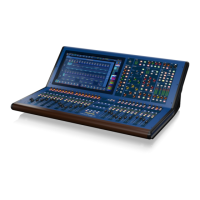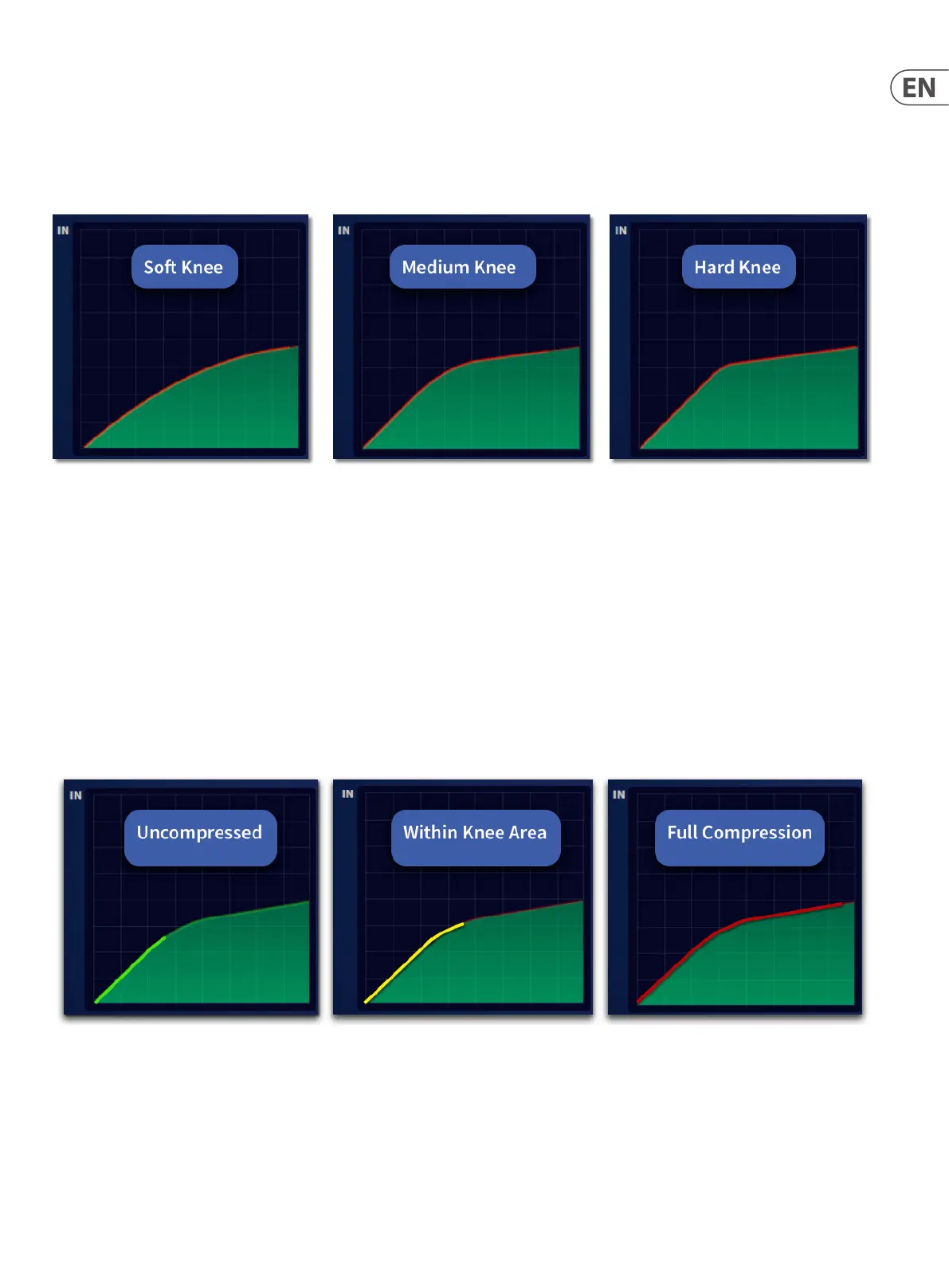263 HD96-24-CC-TP User Manual
Knee
The soft knee curves behave in a traditional way to blend the compression ratio around the threshold setting but more importantly they also have a signicant eect
on the attack envelope shapes. The soft knee typically slows down attack speed on signals in the knee area, which is desirable for natural sounding compression
because it compliments the reduced ratio eect of the soft knee. This produces very gentle compression in the knee region.
The Knee switch has three settings: Hard (4 dB); Medium (12 dB); and Soft (40 dB). In hard setting the compressor still retains some soft knee characteristics. This is
because the implementation of an extremely hard knee produces undesirable sounding distortion on low frequency programme material.
• • Hard knee Compressor immediately applies gain reduction at selected ratio once attack time has elapsed.
• • Medium knee Intermediate knee type.
• • Soft knee Compressor, starting from slightly before threshold, gradually makes the transition to applying gain reduction at selected ratio.
Compressive Display Types
With a signal running through the compressor, a coloured line on the graph follows the contour of the shaded graph area. The line’s colour changes according to which
of the three signal levels it is at.
• • Uncompressed If signal doesn’t reach threshold (point where gradient changes), the line is green. As the threshold is not exceeded, the signal is uncompressed.
• • Within knee area If a signal goes into the knee area to point where the gradient changes (more obvious with medium and soft knees), compression starts to be
applied and the line colour changes to yellow.
• • Full compression If the signal reaches the point where the gradient changes (over threshold), full compression at selected ratio is applied and the line colour
changes to red.
Typical graphs showing the line representing the signal level as it follows the contour of the compressor envelope and changing colour as it passes through the knee.

